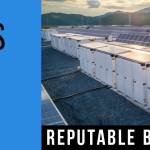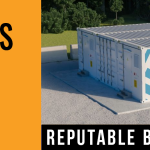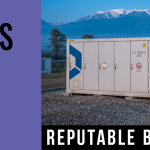
Earlier this year, Secretary Brouillette of the U.S. Department of Energy launched the Trump Administration’s Energy Storage Grand Challenge Program. The initiative is designed to be a comprehensive effort to accelerate the development of next-generation energy storage technology that will position the United States as a global market leader. This program represents a continuation of the administration’s efforts to improve U.S. infrastructure, energy independence, and reliability.
The Grand Challenge builds on the $158 million Advanced Energy Storage Initiative announced in President Trump’s Fiscal Year 2020 budget request. According to a statement from the Department of Energy, the vision for the Energy Storage Grand Challenge is to create and sustain global leadership in energy storage utilization and exports, with a secure domestic manufacturing supply chain that is independent of foreign sources of critical materials, by 2030. While research and development (R&D) is the foundation of advancing energy storage technologies, the Department recognizes that global leadership also requires addressing associated challenges.
Using a coordinated suite of R&D funding opportunities, prizes, partnerships, and other programs, the Energy Storage Grand Challenge sets the following goals for the U.S. to reach by 2030:
Technology Development: Establish ambitious, achievable performance goals, and a comprehensive R&D portfolio to achieve them;
Technology Transfer: Accelerate the technology pipeline from research to system design to private sector adoption through rigorous system evaluation, performance validation, siting tools, and targeted collaborations;
Policy and Valuation: Develop best-in-class models, data, and analysis to inform the most effective value proposition and use cases for storage technologies;
Manufacturing and Supply Chain: Design new technologies to strengthen U.S. manufacturing and recyclability, and to reduce dependence on foreign sources of critical materials; and
Workforce: Train the next generation of American workers to meet the needs of the 21st century electric grid and energy storage value chain.
Energy storage has become more common among infrastructure projects, given recent government efforts like the Energy Storage Grand Challenge Program, continued volatility on the grid, challenges in meeting demand, aging transmission infrastructure, grid instability, price fluctuations, as well as increasing activity in the market for power purchase agreements. To address these issues, some business owners are looking to lower their costs through generation and storage of energy.
In light of these developments, innovative financing will likely evolve as a more prominent part of battery storage projects, as new technologies develop and lenders become more comfortable with the risk/return analysis for such projects. As the energy storage market grows, financial institutions will continue to become more involved wherever they can offer a lower cost of funding as understanding of the complexities and risks of such projects continues to grow. Project financing, public-private partnerships, private equity investment, and specialized funds that invest in energy storage, will become more common among such projects.





